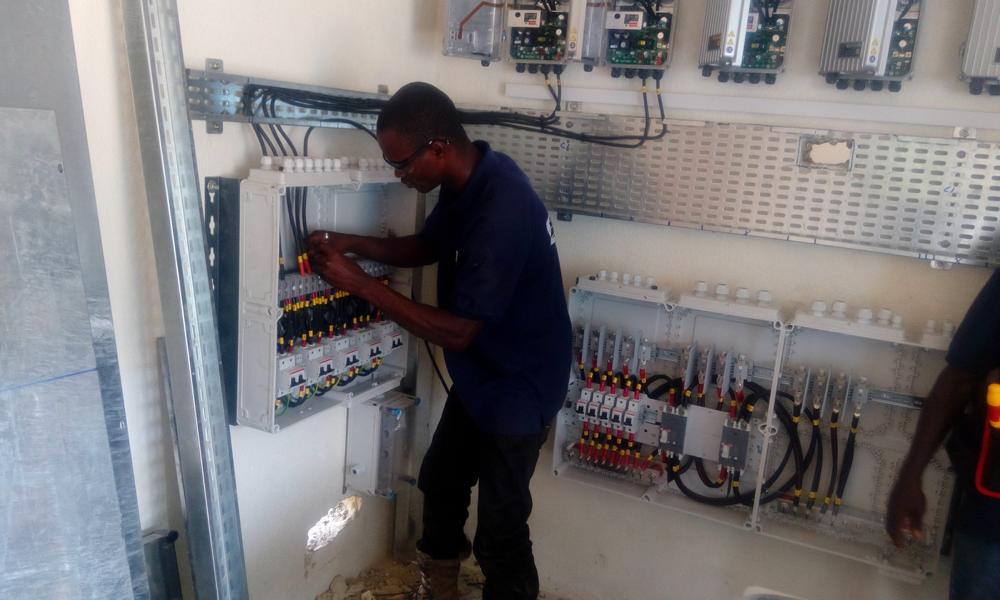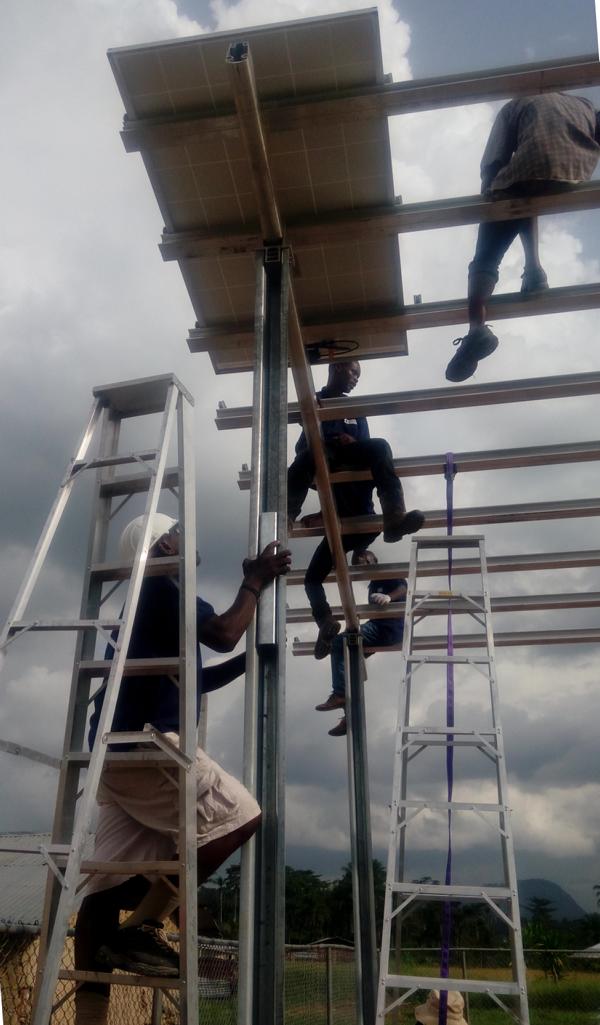In June 2017, five remote communities in Lofa receive a solar power plant and mini-grids as part of the project "Light Up Our Futures," funded by the EU and implemented by PLAN International and VOSIEDA, with technical support of GIZ/EnDev.
Five engineers from Sunlabob, coming from Germany, Australia, Belgium, Uganda and Sierra Leone, worked along with 15 Liberian electricians, electronics, and solar technicians. They worked in four teams: one arranged the batteries and the cables as well as protective devices in the control room. The second group built the structure and mounted the panels. The third group connected the cables in the control room and the household wiring. The fourth group did the distribution lines.

The monitoring system includes sensors that send information to the generator if the battery is low to charge the battery. When the battery is charged, the information is sent and the generator will shut down all by itself. People are only needed to refuel the generator. The company has the code for the monitoring system. They can access it via internet in theory, but in reality the network there is not strong, so people still have to go there to get the information.
James Gweh who had been involved in the installation appreciated the experience. “We learned something new. I had not installed solar panels to this level,” he said. However, he also wondered about sustainability: “They should have trained people to take care. They have a committee, but they are not electricians. How to troubleshoot?”
The installations have been completed, four communities have been electrified. In the fifth community, a fire broke out in one room of the powerhouse and damaged some of the equipment.
To ensure sustainability and to save money for maintenance and repair, residents pay around 350LD per month for a single 8 Watt bulb and a 6 Watt bulb with a prepaid meter. If they want more, they pay more.

